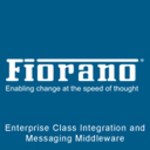What is our primary use case?
The use case involves tasks such as determining the appropriate licensing size, collaborating on firewall projects, and constructing the infrastructure to support the product. In most cases, I focused on integrating Oracle Service Bus to address issues, primarily with local ISPs and one ISP in Colombia. For larger projects covering all offices in Colombia, as well as two or three other projects, my involvement extended to local ISPs in Buenos Aires, specifically with Firecorp, a service provider catering to various companies within the country.
How has it helped my organization?
Enhanced error-handling capabilities significantly boosted the reliability of our application, preventing crashes and ensuring high availability. For context, when dealing with critical services requiring 24/7 availability, we would often implement geographic replication and active-active modes. This setup ensured continuous operation, with one system seamlessly taking over in case of downtime. While automated processes are feasible today, we relied on monitoring tools to confirm operational status. Upon detection of any issues, the system would automatically switch to an alternate data center. Our architectural approach varied based on project requirements, prioritizing resilience and continuity. The distinction between traffic replication and backup lies in the time needed for restoration. By adhering to proper processes, both methods yield similar outcomes, with the primary difference being the time required for recovery.
It aids in ensuring compliance with industry standards and protocols, although I'm uncertain whether the server comes with any preconfigured compliance settings. In my experience, I've been involved in PCI compliance and SOX compliance for large companies, and while considering the brand is essential, compliance configuration often extends beyond the software running on the network. Compliance efforts primarily focus on securing access and safeguarding information within servers or databases, rather than on individual software tools.
What is most valuable?
The most valuable feature for addressing data transformation requirements varies depending on the different layers involved in an IT project. My expertise primarily lies in infrastructure aspects. Therefore, it's important to consider various factors such as project size, focus, and the hardware being utilized, along with its configuration. For instance, when discussing infrastructure, noteworthy features would include ICI or NSX, STM, and essentially anything related to ensuring optimal performance and cost-effectiveness while considering the overall impact on the budget.
What needs improvement?
There is significant room for improvement in the monitoring capabilities. Enhancing this aspect of our monitoring process is essential for effectively pinpointing the root cause of issues accurately and resolving issues in our system.
For how long have I used the solution?
I have been working with it for approximately eight years.
What do I think about the stability of the solution?
The stability is consistently high, with only one notable issue encountered. I would rate it nine out of ten.
What do I think about the scalability of the solution?
While it offers high scalability, it also presents a challenge due to its complexity. Our user base ranges from five thousand to thirty thousand, with one particular department in Argentina boasting over fifty thousand users, since it's one of the government departments. I would rate it seven out of ten.
How are customer service and support?
We've contacted tech support a few times, and the experience has generally been satisfactory. Regarding issue resolution and root cause analysis, I would rate it nine out of ten. However, when it comes to the time taken to escalate to the appropriate engineer with the necessary expertise, I would rate it five out of ten.
How would you rate customer service and support?
Which solution did I use previously and why did I switch?
I've been involved in numerous projects spanning over twenty-five years. My experience ranges from implementing SAP solutions to integrating various data sources and operating systems. I've managed nationwide deployments using remote desktop solutions and utilized SQL Server extensively. Throughout my career, I've worked with diverse technology brands, databases, and operating systems, including hardware components from Cisco, and storage solutions from NetApp, EMC, and HP. While I haven't directly compared Oracle with other ESP products, one noticeable difference is pricing. Oracle products tend to be higher-priced options, which may impact budget considerations. Additionally, while Oracle offers robust features, it often requires a larger team of skilled professionals to manage effectively, which can further affect costs.
How was the initial setup?
The initial setup is complex.
What about the implementation team?
The number of people involved in deployment varies depending on the project's scale, ranging from one for smaller projects to four or five for larger ones. In my experience, significant deployments often entail multiple profiles. For instance, in the database aspect of a major project, installation, configuration, testing, and tuning phases are crucial. This process typically spans several stages, with additional tuning iterations even after transitioning to production.
What's my experience with pricing, setup cost, and licensing?
The pricing is on the higher side. I would rate it ten out of ten.
What other advice do I have?
My recommendation varies greatly depending on the specific context. Factors such as budget constraints, available personnel for system management, and geographical location play significant roles. It's crucial to consider the unique challenges and resources available in each country or region. For instance, hiring local talent in countries like Argentina, Brazil, or Colombia may present different challenges and salary considerations compared to the UK. Overall, I would rate it seven out of ten.
Disclosure: My company has a business relationship with this vendor other than being a customer: Implementer











